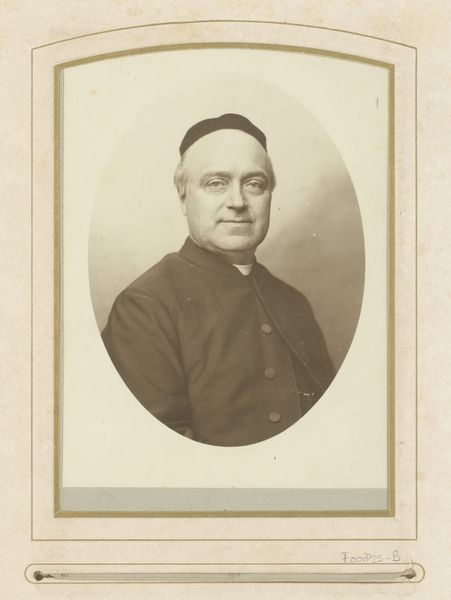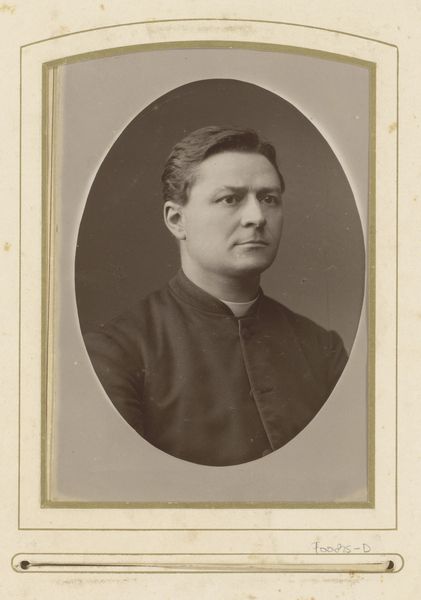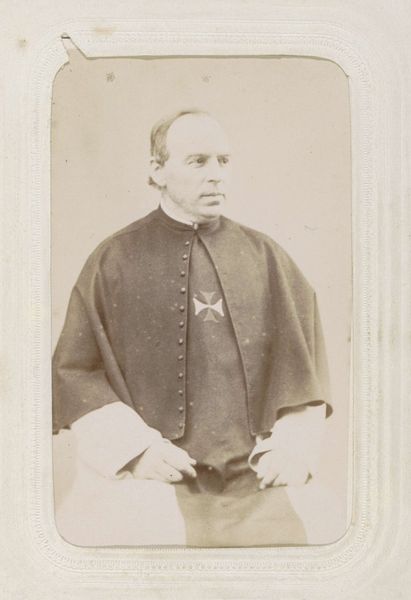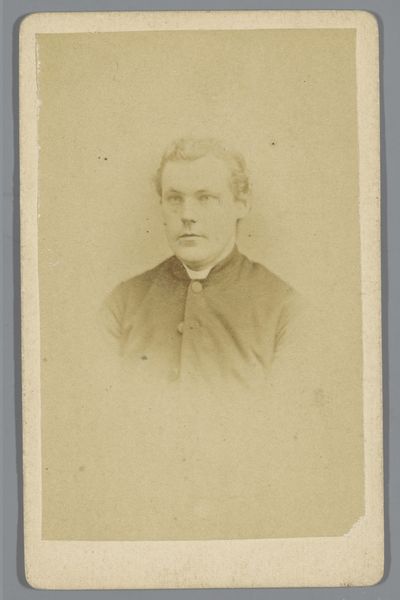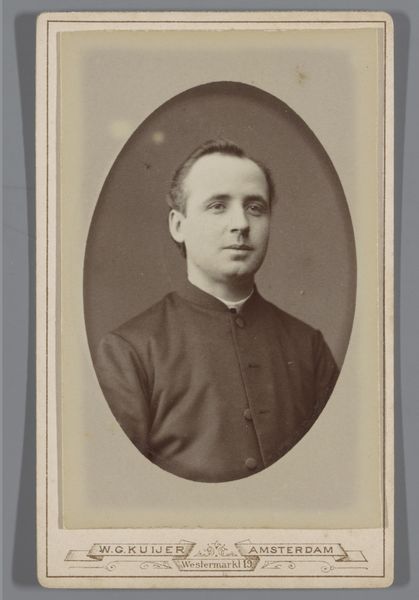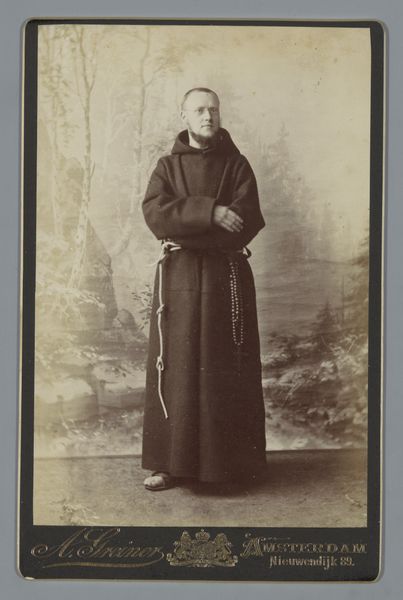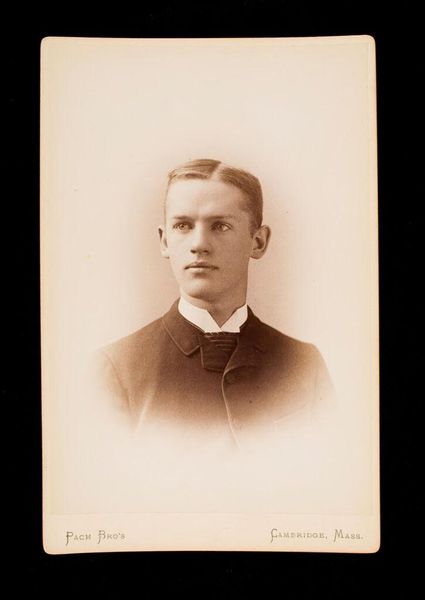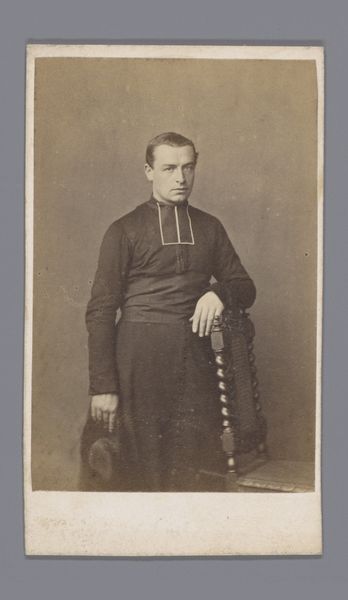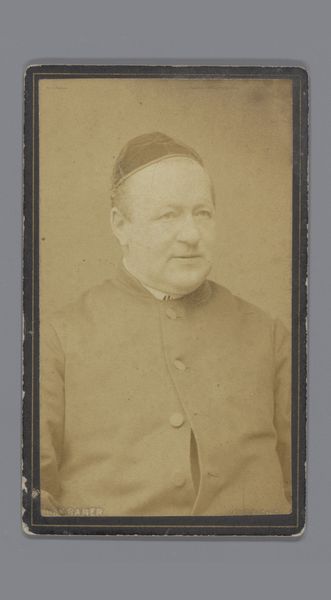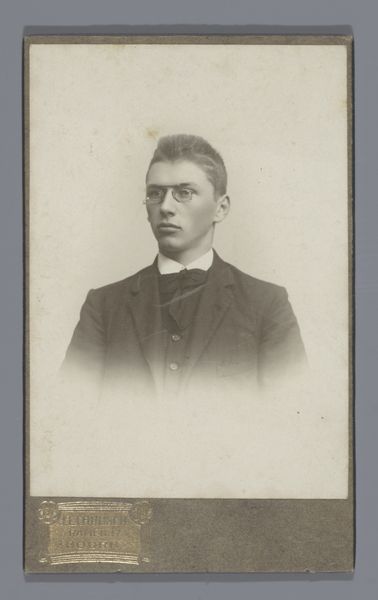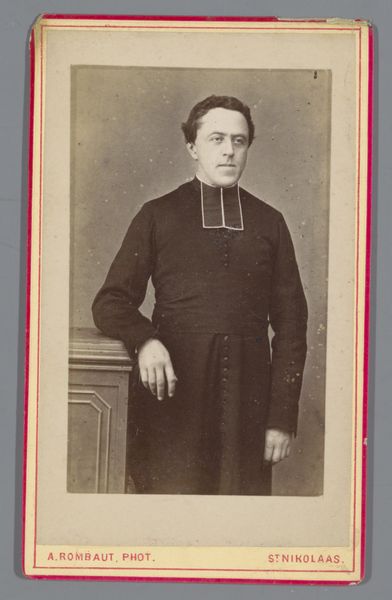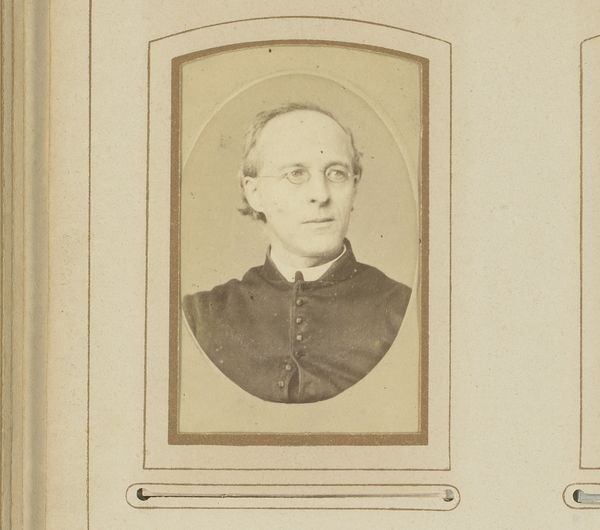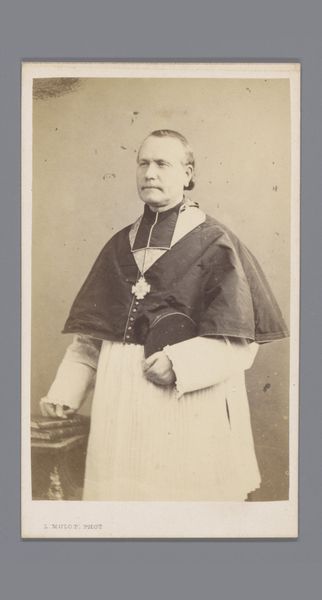
photography, gelatin-silver-print
#
portrait
#
photo restoration
#
photography
#
gelatin-silver-print
#
portrait art
Dimensions: height 137 mm, width 97 mm
Copyright: Rijks Museum: Open Domain
Curator: Looking at this portrait, I find myself pondering how images of authority are constructed. Editor: My first impression is that it’s haunting, almost spectral, like a figure emerging from sepia tones. The glasses especially – they create an odd detachment. Curator: That's an interesting point. What if I told you that this Gelatin-Silver Print, "Portret van een man met bril," was captured sometime between 1880 and 1904 by Eugène Pirou? Editor: It figures – there’s that distinct sense of a late 19th-century studio portrait. The religious garb and serious expression indicate social status, the image is projecting power, subtly but definitely. Curator: Exactly! This form of photography at that time wasn't just documentation; it was image crafting. Every element carries meaning: The clerical clothing for example, signifies piety, learnedness and community responsibility, embedding him within a cultural framework. Editor: And the glasses—I can't get away from those glasses. They feel almost jarringly modern amidst all that historical formality. Is that an intended visual disjunction? Perhaps suggesting a critical mind, an individual grappling with faith and modernity? Curator: It is possible, yes. Or is it an affirmation of status as a man of learning, a cleric who is of his age, knowledgeable about the changes and cultural norms, a leader and conduit through those changes? Editor: The frame, it creates a sense of distance, of almost another time, like the man in the portrait can’t engage us directly anymore because his culture is so far removed from ours. Curator: Think also of the act of commissioning a portrait during that era—it was a conscious decision to be seen and remembered, a power reserved for those with a certain status. Editor: Absolutely, a statement, indeed, in a time of great social and religious upheaval, a symbolic bastion of traditionalism made enduring through the new medium of photography. Curator: Yes, art and technology are powerful in this combination. This portrait leaves me contemplating how much visual cues shape our perception of authority figures. Editor: And it reminds me that every image is a carefully constructed artifact, reflecting not only its subject, but the culture that created it.
Comments
No comments
Be the first to comment and join the conversation on the ultimate creative platform.
